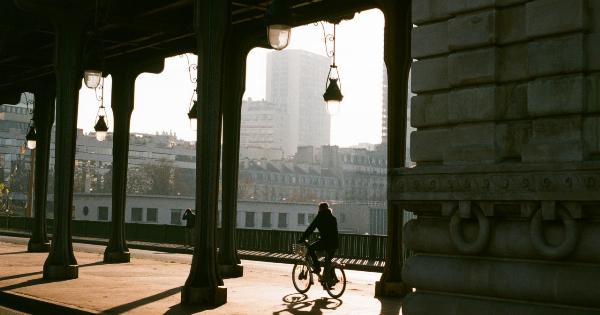Bicycling is an excellent form of exercise, commuting, and entertainment that can be enjoyed year round. With the rise of bike-sharing programs, cycling has become an even more accessible mode of transportation, especially in cities.
But with the convenience of cycling comes the need to ensure that we are riding safely and confidently amidst busy city traffic and crowded pedestrian areas. This guide will provide you with tips and tricks for city riding so that you can bike with confidence.
Wear proper gear for safety
Before heading out onto the streets, it’s important to wear proper safety gear. This includes a helmet, reflective clothing or accessories, and comfortable shoes that are suitable for biking.
A helmet can significantly reduce the risk of head injury in the event of an accident, while wearing reflective clothing can make you more visible to drivers and pedestrians and comfortable shoes will make sure that your feet stays in places and avoid any sort of fatigue.
Understand the Rules of the Road
Knowing the rules of the road is crucial for safe city riding. Even if you grew up riding a bike, it’s important to refresh your knowledge of traffic laws and hand signals. Be sure to follow all signs and signals, and ride in the direction of traffic.
Always signal before making a turn, and use hand signals to indicate the direction you intend to go.
Stay visible
The key to staying safe while cycling in a city is making sure people can see you.
Wear bright colors and reflective clothing or accessories during the day and night, and make sure you have a white front light and red rear light on your bike so you can be seen in low light conditions. Avoid riding in a driver’s blind spot, and make eye contact with drivers when possible to ensure that they see you.
Plan your route
Before setting out on a ride, take some time to plan your route. Choose roads that have bike lanes or designated bike routes whenever possible, and avoid roads that are crowded or have heavy traffic.
Consider taking quieter side streets or using a bike path or trail if one is available.
Ride defensively
When cycling in a city, it’s important to be aware of your surroundings at all times. Assume that drivers and pedestrians may not see you or may not follow traffic laws, and ride defensively.
Always be prepared to stop in case a vehicle or pedestrian unexpectedly enters your path, or a car door opens, and avoid weaving in and out of traffic or riding in between cars.
Be prepared for changing weather conditions
City riding also means facing changes in weather conditions, so make sure you are prepared for any situation. If you are riding in the rain, wear waterproof clothing and make sure your bike’s lights are working.
If you are riding during the day, wear sunglasses and apply sunscreen. Bring along a small repair kit in case of a flat tire or other mechanical issue arises.
Use appropriate hand signals
Hand signals are essential when riding in the city to indicate turns and changes in direction. If you need to turn left, extend your left arm straight out to the side.
For a right turn, extend your right arm out to the side or use your left arm to make an L shape. Use a downward arm motion to signal that you are slowing down or coming to a stop.
Avoid distractions
Cycling in the city can be a fun and exciting experience, but it’s important to stay focused and avoid distractions.
Avoid using your phone or other electronic devices while cycling, and refrain from listening to loud music that may prevent you from hearing the sounds around you. Keep your eyes and ears alert to what’s happening around you at all times.
Stay calm and collected
Finally, remember to stay calm and collected when faced with challenging situations while cycling in the city. If you find yourself in a tricky spot, such as heavy traffic or a crowded sidewalk, take a deep breath and remain focused on your safety.
Don’t get agitated with other cyclists or drivers, and always give yourself enough time and space to get to your destination safely.
In conclusion
City riding can be a liberating and enjoyable experience if you follow these guidelines.
It’s important to stay safe and be aware of your surroundings at all times, so wear appropriate gear, use hand signals, and plan your route carefully, and always be alert and ready to stop or change direction quickly. With a little practice and attention to safety, you can bike with confidence and enjoy all the benefits of cycling as a key mode of transportation.






























